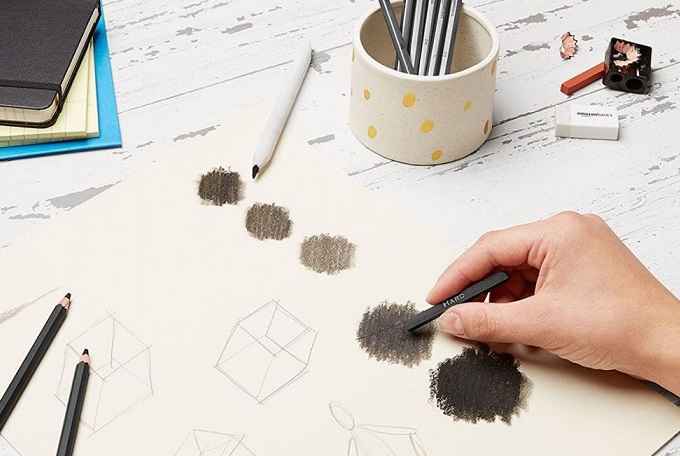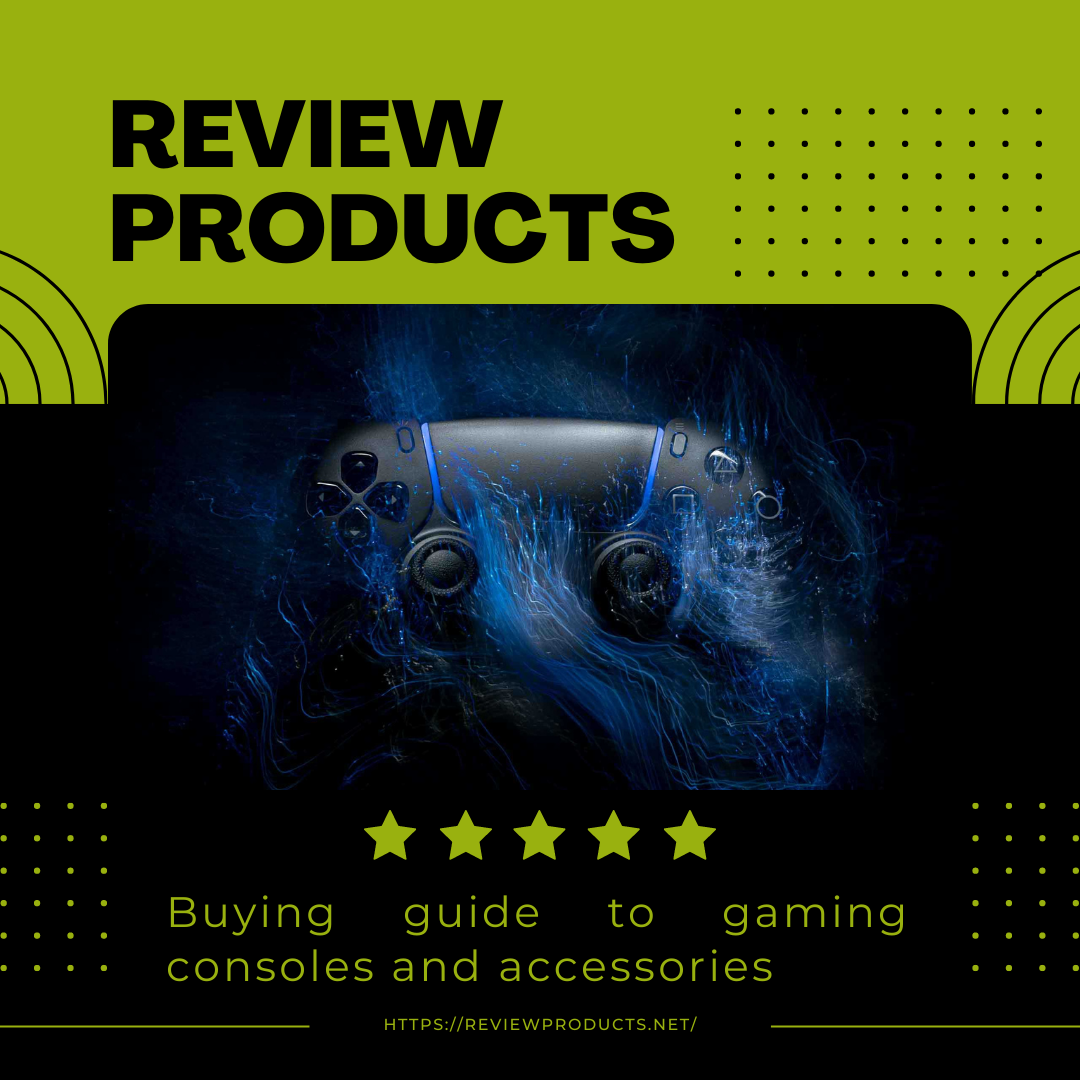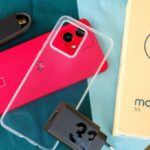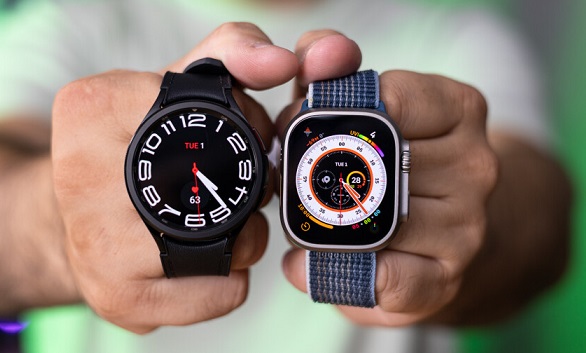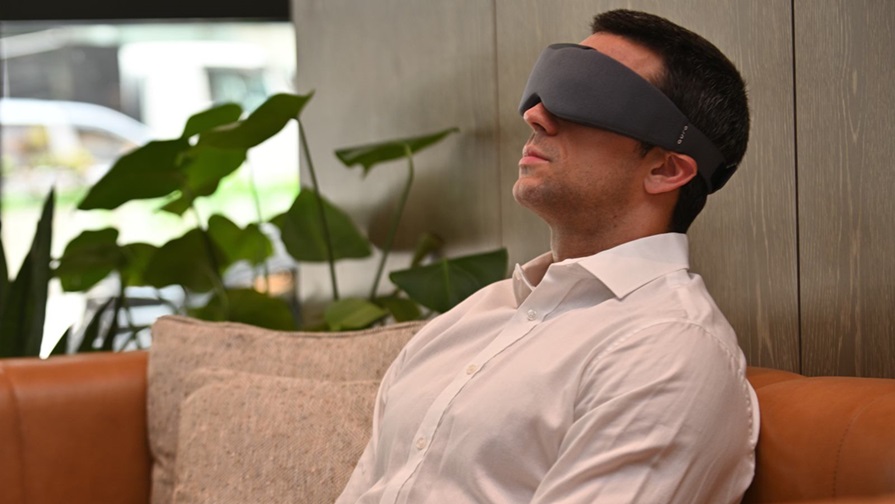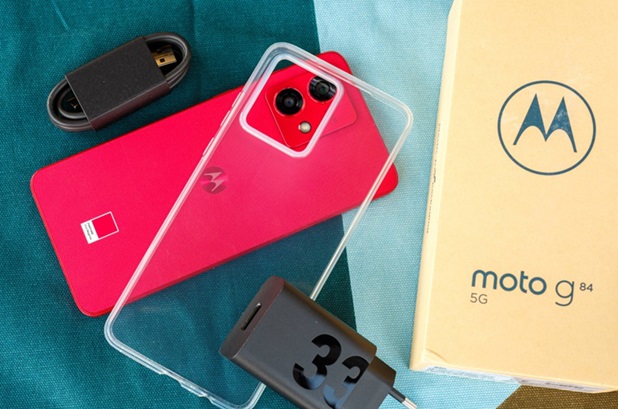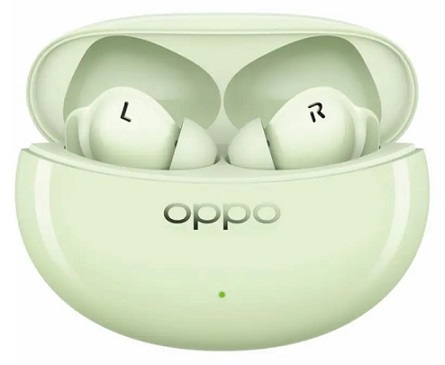Samsung Galaxy Watch 6 Classic Review Notable UpgradesSamsung Galaxy Watch 6 Classic Review Notable UpgradesSamsung Galaxy Watch 6 Classic Review: Notable Upgrades
Samsung has recently been less innovative than Apple, not only with its wearables but also with its high-end smartphones. The recently released Galaxy S23, S23+, Galaxy Z Flip 5, and Galaxy Z Fold 5, all of which bring qualitative performance and imaging advancements, serve as a case in point. Samsung has continued this trend with the Galaxy Watch 6 series for users of the Galaxy Watch 5 and Galaxy Watch 5 Pro. There is a new chipset; one display is more extensive and has a rotating bezel back, and the health and fitness tracking is more individualized.
On paper, there seems to be little incentive to upgrade to the new models, mainly since its feature set doesn’t provide much that is novel. But thanks to these tiny improvements, the Galaxy Watch 6 and Galaxy Watch 6 Classic are somewhat better. And that is enough to convince upgraders who aren’t too thrilled with their current wristwatch or those who are just shopping for their first WearOS-powered wearable to buy the new versions.
Price and features of the Samsung Galaxy Watch 6 and Galaxy Watch 6 Classic
There are two models of the Samsung Galaxy Watch 6 series. The Galaxy Watch 6 is the regular model, and it comes in the same 40mm and 44mm case sizes as the Galaxy Watch 5. The pricing of the Bluetooth variants is Rs. 29,999 and Rs. 32,999, while the price of the cellular variants is Rs. 33,999 and Rs. 36,999.
The Galaxy Watch 6 Classic is an additional option, and it comes in 43mm and 47mm case sizes. It is priced at Rs. 36,999 and Rs. 39,999 for the Bluetooth versions and Rs. 40,999 and Rs. 43,999 for the cellular versions, respectively.
Compared to what Apple offers, Samsung’s finish options remain highly constrained. The Galaxy Watch Classic is available in Silver and Black, while the Galaxy Watch 6 includes options for Silver and Graphite cases. I received the 44mm Graphite Galaxy Watch 6 and the 47mm Silver Galaxy Watch 6 Classic for review.
Design and features of the Samsung Galaxy Watch 6 and Galaxy Watch 6 Classic
The Samsung Galaxy Watch 6 features the same style and button layout as the previous generation and has an aluminum body with flat sides. The display is the only thing that stands out, and it has gotten bigger because Samsung chose to use a smaller bezel this year.
It can be difficult for the average consumer to distinguish between the Galaxy Watch 4, Galaxy Watch 5, and Galaxy Watch 6. This is because the design has mostly stayed the same over the past two generations, which does cause it to get a touch stale in its third year.
Compared to the ordinary Galaxy Watch 6 model (left), the Samsung Galaxy Watch 6 Classic (right) features an updated look.
On the other hand, the Galaxy Watch 6 Classic, which has returned after a year-long hiatus, appears slightly refreshing. Samsung chose to forego the Classic model last year in favor of the new Pro model. The target market for the Pro and the new Classic is different. The Galaxy Watch 5 Pro still features the largest battery of the current and previous models, making it a solid rival to Apple’s Watch Ultra variant. Except for a longer battery life and a titanium case, it did not differ significantly from the ordinary Galaxy Watch 5 model’s functionality.
Samsung’s replacement for Apple’s digital crown, the rotating bezel, is a prominent feature of the Galaxy Watch 6 Classic. It performed as predicted during the testing period and is what separates the two versions.
What’s fascinating about the Classic’s design is how Samsung reduced the width of that rotating bezel while still fitting in a display more prominent than the ones on the older Galaxy Watch 4 Classic and the more recent Galaxy Watch 5 Pro. Compared to earlier models, this slim bezel makes the stainless steel casing look cleaner and more modern. Another thing to note is the dual-tone finish, which combines polished and brushed stainless steel and has a luxurious appearance.
Both smartwatches feature an array of sensors on their backs.
Both types have two physical buttons with different purposes that can be programmed. Both watches’ quality and polish were satisfactory. Still, I preferred the average Galaxy Watch 6’s strap since it is softer and less rigid than the Classic model, making it more comfortable to wear. But I could easily switch straps between the two eyes because the 20mm straps on both watches are the same. I found the Classic’s thick 47mm case manageable while I slept.
This year’s specifications are comparable to the Standard and Classic variants. The same 5nm Exynos W930 chipset powers both devices, although they have 500MB more RAM than the previous generations. The watch is jam-packed with sensors, including an accelerometer, gyroscope, compass, heart rate monitor, temperature sensor (for skin temperature), barometer, and a 3D hall sensor determining where the spinning bezel is in space.
The 44mm and 47mm Galaxy Watch 6 and Galaxy Watch 6 Classic variants may switch straps.
The 44mm Galaxy Watch 6 and the 47mm Galaxy Watch 6 Classic share a 1.5-inch super AMOLED display with sapphire crystal for protection thanks to the thin bezels on both wearables. The 425mAh battery capacity is the same for all variations of each model. Each model’s lesser variations include 300mAh batteries. All models and interpretations have been MIL-STD-810H certified and are 5ATM water resistant with an IP68 designation, making them just as durable as other contemporary clocks.
Performance of the Samsung Galaxy Watch 6 and Galaxy Watch 6 Classic
When necessary, the displays are said to be capable of reaching 2,000 nits of peak brightness (the same as the Apple Watch Ultra), and I can attest that they are sufficiently bright to handle all kinds of lighting circumstances. Both smartphones’ built-in speakers are loud enough to pick up calls and hear Google Assistant’s responses. Even with some wind blowing into the mic, it is still pretty clear to the caller. The watch’s LTE connectivity makes it an excellent option for staying connected on walks or jogs, allowing you to leave your smartphone at home. When the linked smartphone cannot be reached, both devices can connect to Wi-Fi networks.
You don’t need companion apps to get started because they are already preinstalled on Samsung devices. I also used both devices with a Pixel 7a regarding features and functionality. However, I noticed that the Camera Controller app vanished from the watch’s app menu because it can only be utilized with a Galaxy smartphone.
For the watch to work correctly with a Pixel 7a, you must install three apps (Samsung Health, Galaxy Wearable, and Samsung Smart Switch) and a plug-in. Once established, I discovered that the Samsung Health and Galaxy Wearable applications were well-designed, with all options located precisely where they should be. To make things more convenient, I hope that Samsung eventually merges its Health app into its Wearable app.
The Galaxy Watch 6 and the Galaxy Watch 6 Classic included software that I found enjoyable. However, the rotating bezel of the Classic gives it a tremendous mechanical feature (which is lacking from most WearOS-powered smartwatches these days). It takes it nearer to classic clocks. Instead of repeatedly swiping the display, which did become tiresome when using the Galaxy Watch 6, the rotating bezel’s geared clicks provide a quick way to scroll through menus. On the Galaxy Watch 6, you can scroll using the virtual touch bezel, but it’s still a fidgety experience and does not offer precise control like the actual rotating bezel.
Over the previous generation, overall software performance has significantly increased. There is no lag when navigating between tiles, watch faces, and other options, unlike with the Galaxy Watch 5 Pro.
The One UI 5.0 Watch user interface has seen some minor changes from Samsung. Although the choices are still somewhat limited compared to what you get on an Apple Watch, there are new watch faces that are highly customizable. With the help of a new battery tile, you can quickly check the battery life of all your Samsung devices. You can now make folders, a valuable method to remove all of those pointless apps off the main menu and make it easier to find what you need.
Without resetting the watch and restoring from a backup, you may now backup, repair, and even transfer your look to another phone (even an Android smartphone made by a manufacturer other than Samsung). Users may now secure their watches with a pin or pattern, rendering them worthless in theft.
The associated Samsung Health app provides intriguing insights when displaying data linked to sleep.
Enhanced sleep coaching is another addition to One UI 5.0, which I found intriguing, considering the thorough results and the additional data the companion app offered. I received the expected outcomes, which included reliable sleep-tracking data and the various sleep stages. With enough data, the sleep coaching tool performs reasonably well (it needs a seven-day break-in time to work its magic). The watch measures blood oxygen levels while you sleep and provides a sleep score and badges. Samsung has also used its temperature sensor well by recording your skin temperature while you sleep.
Additionally, the companion app detects when you stray from your typical sleep patterns and sends you a reminder the following day with a browser link to read up on why it’s not a good idea to do so. Even the regular stand-up reminders offer three quick workout mode suggestions that hardly take a few minutes to complete during the periods I’m stuck in my work chair.
When I use an Apple Watch, I do not feel as motivated to get up from my chair for a fast workout because these stretches are counted and accurately tracked. After a while, I started to feel as though my watch genuinely cared about me, which I’ve only seldom had with any of the smartwatches I’ve tested so far.
There are numerous workout modes on the Galaxy Watch 6 series, including one that may be customized.
The ability to design your custom activity, receive heart rate assistance throughout running exercises, and have personalized heart rate zones while running was another feature of Samsung’s personalized coaching that I loved. In essence, this aids users in getting more out of their exercise or workout.
Regarding the tracking components, the step tracking was precise and tallied 500 steps while walking. SpO2 tracking was accurate and reliable compared to a standalone pulse oximeter, but I had to sit down and bring my palm up to my chest while wearing the watch close to my heart to record it. The results of my heart rate were also accurate. In India, the ECG functionality and blood pressure monitoring are currently unavailable or inoperable.
However, I did have a few snags while using the watch. When switching from AOD to the watch face on a Samsung device, you may need to physically make the flick-to-view gesture because it isn’t as sensitive as the Apple Watch Series 8’s. Because the rotating bezel is better suited for Samsung’s watch OS and apps than for some Google and third-party apps or the Play Store, software interactions when utilizing it might become clumsy. The standard swipe gestures on the display undoubtedly performed better in these circumstances.
The Samsung Galaxy Watch 6 series includes the same charger as last year’s model.
Because they both have identical display sizes and battery capacity, my experience with battery life on the Galaxy Watch 6 series was consistent. However, a 1km GPS-connected walk or run will only use up approximately 3% of the battery, which is about 21% for my 7km brisk walks.
The watch lasted one day, 7 hours, and 20 minutes (or 31 hours, 20 minutes) with the AOD on, brightness set to auto (on a sunny day), continuous heart-rate monitoring, stress monitoring, and sleep tracking (with SpO2 and Skin temperature tracking). My standby time they were improved by around nine hours when AOD was turned off, giving me one day, 17 hours, and 2 minutes (or 41 hours, 2 minutes), which is comparable to a 45mm Apple Watch Series 8 in size. The smartphone charged as quickly as models from the previous year, reaching 50% charge in 30 minutes and 100% charge in 1 hour and 27 minutes.
Verdict
Even while the new Galaxy Watch 6 has a few improvements over the previous model, there are few reasons to switch from a Galaxy Watch 5 (Review) unless you need more excellent software performance or somewhat more extended battery life.
Most of the hardware- and software-related improvements listed above will also be added to models from last year via the One UI 5.0 update, which Samsung has already started rolling out in several nations. In the case of the Galaxy Watch 6 Classic, things are different because it has a brand-new design as opposed to the recycled one on the ordinary model, which is refreshing.
The Galaxy Watch 6 Classic, which is the finest way to use a Galaxy smartwatch, is what I would select if I had to choose between the two. And since I don’t own a Samsung smartphone, this wearable is automatically my top pick for anyone searching for a high-end Wear-OS-powered gadget in India.



